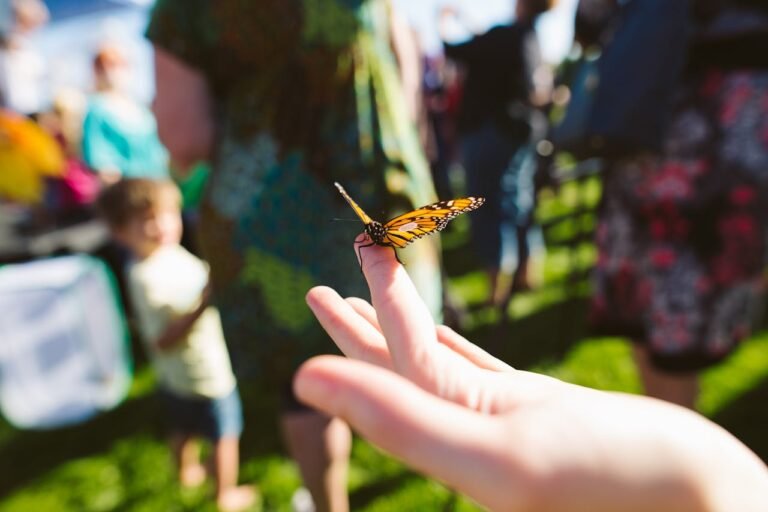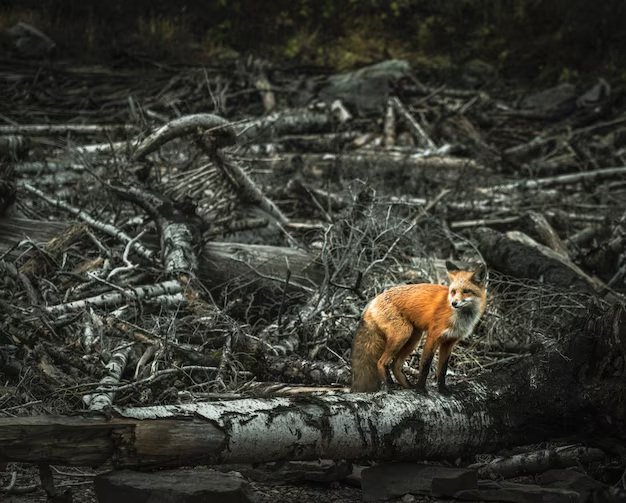10 Invasive Animal Species Examples
Invasive animal species aren’t just a concern for scientists—they’re a real-world issue that affects our daily lives. When a non-native animal enters a new environment, it can disrupt local ecosystems, often leading to unforeseen consequences. These introductions can be accidental, like stowaways in cargo shipments, or intentional, such as releasing animals for pest control or as exotic pets.
Take, for example, the situation in Florida, where Burmese pythons have become a significant problem. Originally introduced through the pet trade, these snakes have established themselves in the wild, preying on native wildlife and upsetting the ecological balance. Efforts to control their population are ongoing, but the challenge remains substantial.
In this article, we’ll explore ten invasive animal species that have made headlines due to their impact on local communities and ecosystems. We’ll look into scientific studies and expert insights to understand how these species arrived, the problems they’ve caused, and what measures are being taken to address the issues. Our goal is to shed light on this global challenge and discuss ways we can all contribute to preventing the spread of invasive species.

In This Article
- 1. European Starling (Sturnus vulgaris)
- 2. Burmese Python (Python bivittatus)
- 3. Cane Toad (Rhinella marina)
- 4. Red Imported Fire Ant (Solenopsis invicta)
- 5. Asian Carp (Hypophthalmichthys spp.)
- 6. House Sparrow (Passer domesticus)
- 7. Northern Snakehead (Channa argus)
- 8. Brown Tree Snake (Boiga irregularis)
- 9. European Rabbit (Oryctolagus cuniculus)
- 10. Feral Cats (Felis catus)
- Conclusion and Actionable Advice
1. European Starling (Sturnus vulgaris)
The European Starling, originally from Europe, was introduced to North America in the 1890s by Eugene Schieffelin, who released about 100 birds in New York City’s Central Park. He aimed to introduce all birds mentioned in Shakespeare’s works to America. However, this well-intentioned act led to unforeseen ecological consequences.
Today, the starling population in North America exceeds 200 million. These birds are highly adaptable, thriving in both urban and rural environments. They pose significant challenges to native bird species, particularly cavity-nesters like bluebirds and woodpeckers, by aggressively competing for nesting sites. Starlings often evict native birds from their nests, sometimes destroying eggs or killing nestlings in the process.
In agriculture, starlings are notorious for their destructive feeding habits. They consume a wide variety of crops, including fruits like grapes, cherries, and blueberries, as well as grains. Their large flocks can decimate fields, leading to substantial economic losses. According to a study by Pimentel et al. (2005), starlings cause over $800 million in agricultural damage annually in the United States.
Farmers have tried various methods to deter starlings, such as netting, noise machines, and scare tactics. However, these measures often provide only temporary relief. The birds’ intelligence and adaptability make them difficult to control.
Dr. Christopher Lepczyk, an ecologist at Auburn University, notes that starlings exemplify how even well-meaning introductions can have negative ecological impacts. Their success in North America shows their adaptability, but it comes at a significant cost to native species and agriculture.
Efforts to manage starling populations continue, but their widespread presence and impact highlight the complexities of ecological balance and the unintended consequences of introducing non-native species.

2. Burmese Python (Python bivittatus)
The Burmese python, originally from Southeast Asia, has become a significant threat to Florida’s Everglades. These snakes were introduced to the region through the exotic pet trade, with many released into the wild by owners who could no longer care for them. Over time, they have established a substantial population in the Everglades.
The impact on native wildlife has been profound. Research indicates that sightings of raccoons have decreased by 99.3%, opossums by 98.9%, and bobcats by 87.5% in areas where these pythons are prevalent. These declines are attributed to the pythons’ predation on these mammals.
Endangered species, such as the Key Largo woodrat, are also at risk. Instances have been documented where pythons have consumed these rare rodents, further threatening their already dwindling populations.
The presence of Burmese pythons has disrupted the natural balance of the Everglades ecosystem. As apex predators, they have few natural enemies in this environment, allowing their numbers to grow unchecked. Efforts are underway to manage and reduce their population, but the challenge remains significant.
The situation underscores the importance of responsible pet ownership and the potential consequences of introducing non-native species into new environments. Protecting the Everglades’ unique biodiversity requires continued attention and action to address the Burmese python invasion.

3. Cane Toad (Rhinella marina)
The cane toad’s journey from South America to Australia began in 1935, when it was introduced to combat beetles threatening Queensland’s sugarcane crops. However, this well-intentioned plan backfired dramatically. Without natural predators in Australia, the cane toad population exploded, with females capable of laying up to 30,000 eggs at once. Their toxic skin proved deadly to native predators like goannas, freshwater crocodiles, and even domestic pets. According to the Department of Climate Change, Energy, the Environment and Water, cane toads continue to spread across Australia, posing significant challenges to native wildlife.
Peter Wood, an Indigenous elder from Queensland, shared, “We used to teach our kids about local frogs and lizards. Now we warn them not to touch anything. The toads are everywhere.” This highlights the profound impact invasive species have had on local communities.
In response to this crisis, scientists have developed innovative solutions. A team led by ecologist Rick Shine and molecular biologist Maciej Maselko has created genetically engineered cane toad tadpoles, nicknamed “Peter Pan,” which remain in their tadpole stage and exhibit extreme cannibalistic behaviour. These tadpoles consume cane toad eggs, potentially controlling the population. While promising, this approach requires further testing to assess ecological impacts and feasibility.
The cane toad invasion has also driven rapid evolutionary changes in native species. Studies have shown that red-bellied black snakes have adapted by developing smaller head sizes, possibly to avoid consuming toxic toads.

4. Red Imported Fire Ant (Solenopsis invicta)
The red imported fire ant (Solenopsis invicta) has become a significant concern in the southern United States since its accidental introduction from South America in the 1930s, likely through cargo shipments. These ants are known for their aggressive behaviour and painful stings, which can be particularly dangerous to small animals and individuals with allergies.
Ecologically, red imported fire ants have a profound impact. They displace native ant species and pose a threat to ground-nesting birds by preying on eggs and chicks. Their presence can disrupt local ecosystems, leading to a decline in biodiversity. Additionally, these ants are notorious for damaging electrical equipment, leading to significant economic losses. The U.S. Department of Agriculture estimates that the combined costs of damage repair, medical treatment, and control efforts exceed $6 billion annually.
Efforts to control red imported fire ant populations include the use of baiting systems and public education campaigns. However, the resilience and adaptability of these ants make eradication challenging. Continued research and community involvement are crucial in addressing the threats posed by Solenopsis invicta.

5. Asian Carp (Hypophthalmichthys spp.)
Asian carp, originally from China, were brought to the U.S. in the 1970s to help clean wastewater ponds. But they escaped into the Mississippi River and have been moving north ever since. These fish are voracious eaters of plankton, the tiny organisms that form the base of aquatic food chains. By consuming so much plankton, Asian carp outcompete native fish species, disrupting ecosystems and threatening the balance of aquatic life.
The Great Lakes, which support a $7 billion fishing industry, are particularly at risk. If Asian carp establish themselves there, they could decimate native fish populations, harming both the environment and the economy. To prevent this, various measures have been implemented, such as electric barriers in waterways and plans for new deterrent systems. However, these efforts face challenges, including funding delays and political hurdles.
In an innovative approach to control their population, some initiatives have rebranded Asian carp as “Copi” to make them more appealing as a food source. The idea is to encourage people to eat them, thereby reducing their numbers in the wild. While this strategy has seen some success, it’s just one part of a broader effort needed to address the threat posed by these invasive fish.

6. House Sparrow (Passer domesticus)
The House Sparrow (Passer domesticus) is a small, unassuming bird that has made a significant impact on native bird populations in North America. Originally from Europe and Asia, it was introduced to North America in the 1850s with the intention of controlling insect populations. However, this introduction has led to unintended ecological consequences.
House Sparrows are known for their aggressive behaviour, particularly when it comes to nesting. They often take over nesting sites intended for native birds such as Eastern Bluebirds and chickadees. This is not a peaceful takeover; House Sparrows have been documented evicting native birds from their nests, destroying eggs, and even killing nestlings and adult birds. A study highlighted that House Sparrows readily out-compete native species for nesting sites by evicting other nesting birds, destroying their eggs, and sometimes even killing the incubating female.
The impact of House Sparrows extends beyond nesting sites. They also compete with native birds for food, often dominating feeders and reducing the availability of resources for other species. This competition can lead to a decline in native bird populations, as they struggle to find adequate nesting sites and food sources.
Bird enthusiasts and conservationists have observed these challenges firsthand. For instance, Robyn L. Bailey, a researcher at the Cornell Lab of Ornithology and lead author of a 2020 study, noted that nearly one-third of surveyed nest box monitors reported instances where non-native species, such as House Sparrows and European Starlings, usurped nests of native birds, leading to nest failures.
Efforts to mitigate the impact of House Sparrows include modifying birdhouses to deter them and monitoring nesting sites to protect native species. However, managing their population remains a complex issue, requiring ongoing attention and action from both conservationists and the public.

7. Northern Snakehead (Channa argus)
The northern snakehead (Channa argus) is a fish that has stirred significant concern in the United States. Originally from parts of Asia, including China, Russia, and Korea, it found its way into U.S. waters through aquarium releases and the live fish trade.
This fish is an apex predator, feeding on a variety of aquatic creatures like fish, frogs, and even small birds. Its ability to breathe air allows it to survive out of water for several days, and it can even move short distances over land, making it particularly invasive. These traits enable it to outcompete native species for food and habitat, disrupting local ecosystems.
A notable incident occurred in 2002 in Crofton, Maryland, where authorities discovered a population of northern snakeheads in a local pond. The fish were descendants of a pair released by an individual who had purchased them in New York. To eradicate them, officials treated the pond with a fish poison called rotenone, successfully eliminating the invasive species.
Since then, the northern snakehead has been spotted in various states, including Missouri, New York, and Pennsylvania. Their presence poses a threat to native aquatic life due to their aggressive nature and rapid reproduction. Female snakeheads can produce up to 50,000 eggs, many of which hatch within 24 to 48 hours, according to the U.S. Fish and Wildlife Service.
In response to the threat, the U.S. has implemented measures to control the spread of this species. The northern snakehead is listed under the Lacey Act, making it illegal to possess or transport them without a permit. Authorities advise that if one is caught, it should be killed immediately to prevent further spread.

8. Brown Tree Snake (Boiga irregularis)
The brown tree snake was inadvertently introduced to Guam in the aftermath of World War II, likely as a stowaway in military cargo. This nocturnal predator found an environment with abundant prey and no natural predators, leading to a rapid population explosion.
According to the University of Washington, Guam—once home to 12 native forest bird species—lost 10 of them due to the snake’s predation, highlighting the far-reaching ecological impact. The Guam flycatcher and the Guam kingfisher, both unique to the island, were among the casualties. The loss of these birds disrupted the island’s ecosystem, affecting seed dispersal and leading to overgrowth of certain plant species.
Beyond ecological damage, the brown tree snake has caused significant economic and infrastructural issues. Between 1978 and 1997, these snakes were responsible for over 1,600 power outages on Guam. Their habit of climbing power lines and equipment led to frequent electrical disruptions, affecting homes, businesses, and military operations.
Efforts to control the snake population have included trapping, canine detection units, and even aerial drops of poisoned bait. While these measures have had some success, complete eradication remains elusive.

9. European Rabbit (Oryctolagus cuniculus)
In 1859, a British settler named Thomas Austin released 24 European rabbits on his estate in Victoria, Australia, intending to recreate the hunting traditions of his homeland. He believed that introducing a few rabbits would be harmless and provide a touch of familiarity. However, Australia’s environment, lacking natural predators for rabbits, proved ideal for their rapid proliferation. Within a decade, the rabbit population exploded, spreading across vast regions at an unprecedented rate.
In terms of ecological consequences, it was observed that the impact was extreme. Rabbits overgrazed native vegetation, leading to significant soil erosion and desertification. This environmental degradation threatened Australia’s unique biodiversity, affecting numerous native plant and animal species. By the 1950s, the rabbit population had soared to an estimated 600 million, causing extensive environmental and economic damage.
Farmers like Louise Benton recall the devastation: “They’d eat entire fields overnight. We resorted to fumigation and fencing, but they always found a way.” The agricultural sector suffered immensely, with rabbits causing significant losses in crop yields and pasture quality. Efforts to control the population included constructing extensive fences, such as the rabbit-proof fence, and introducing biological controls like the myxoma virus in the 1950s. While these measures temporarily reduced numbers, rabbits eventually developed resistance, and populations rebounded.

10. Feral Cats (Felis catus)
Feral cats may look like our beloved pets, but once they live wild, their impact on nature is anything but harmless. Originally domesticated in Europe and Asia, these cats have now spread across the globe, often thriving in urban and rural areas alike.
The ecological consequences are staggering. According to a study published in Nature Communications, free-ranging domestic cats kill an estimated 1.3 to 4.0 billion birds and 6.3 to 22.3 billion mammals annually in the United States alone, with unowned cats causing the majority of this mortality. Another study suggests that, globally, their predation has contributed to the extinction of at least 63 species, including 40 birds, 21 mammals, and two reptiles.
Dr. Sarah Legge, a conservation biologist, emphasises the severity of the issue: “Cats are charming companions, but once feral, they become lethal predators. Their control is one of conservation’s thorniest issues.”
Efforts to manage feral cat populations are complex and often controversial. Programs like Trap-Neuter-Return (TNR) aim to control numbers humanely, but their effectiveness in reducing predation is debated. In Australia, where feral cats threaten numerous native species, initiatives include cat-proof fencing and targeted removal in sensitive habitats.
Balancing compassion for cats with the urgent need to protect wildlife requires informed, community-driven solutions. Recognising the profound impact of feral cats is the first step toward meaningful action.

Conclusion and Actionable Advice
Invasive animal species are a global issue with deeply local consequences. Each example in this guide isn’t just a story of ecological disruption but of human resilience, heartbreak, and innovation.
What Can You Do?
- Educate yourself and others about local invasive species.
- Avoid releasing pets or exotic animals into the wild.
- Support legislation and conservation efforts aimed at controlling invasive populations.
- Participate in citizen science programs like iNaturalist to track and report sightings.
Key Takeaway: Invasions are easier to prevent than to reverse. Each of us plays a role in protecting our ecosystems.







